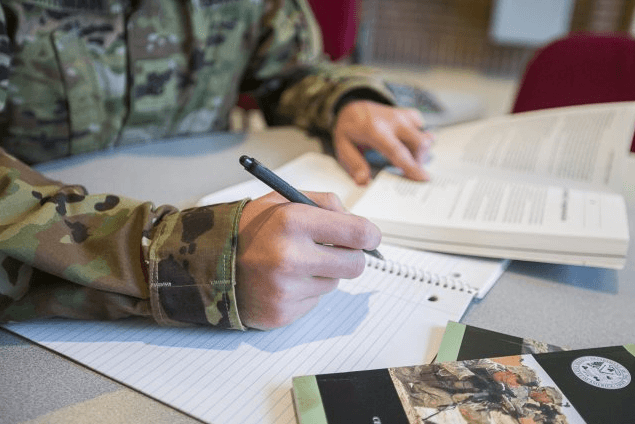A survey of military members and veterans revealed that more than half joined the armed services for education benefits, but one expert says tuition assistance is mostly underused and ignored.
The findings, according to Institute for Veterans and Military Families, show 53% of respondents state a top motivation for military service is education benefits. Dr. Kenneth Hardy, chief of the Army National Guard’s Education Services Branch, equates the abundance of financial aid options to buying a car.
“Think of it like you’re buying a new car, the salesman tells you about all these great new features and you think, ‘Wow, that’s great!’ But then you buy the car and just play the radio,” Hardy said. “The salesman may have swayed your opinion, but you never actually use the car for part of what you bought it for.”
That, Hardy said, is essentially what is happening with guardsmen when it comes to their military educational benefits.
But Hardy and his team are working hard to reverse that trend, raising awareness of all things educational when it comes to the Guard’s plusses. These extend to not only traditional college degrees, but also trade schools and credentialing. Here are the most underutilized education tools for guardsmen, according to Hardy:
State tuition
National Guard units in 42 states now offer completely free tuition for guardsmen at any public and many private universities and trade schools, a significant increase from when Hardy took over in 2014. Guam remains the only National Guard unit to not have any sort of state/territory assistance program.
“Tuition from our state’s National Guards is the gold-plated benefit out there for Guard members,” Hardy said. “And many pay up to a graduate degree, too.”
The 100% tuition coverage was a prime reason, why Hardy, in fact, joined the Massachusetts National Guard in 1994.
“My goal before I retire is to get all 54 states and territories to that same 100% mark,” he said.
To check your state’s tuition benefits, see this page.
Joint Services Transcript
The Joint Services Transcript (JST) is one of the few instances where someone’s real-life experiences can actually translate into quantifiable college credits. A standardized formula takes a service member’s rank, time in service, MOS and a few other variables into account before producing a final number of transferable credits.
“It’s not an academic transcript by any stretch, but now a college can look at that and say, ‘We’ll give you 24 credits based off this,” Hardy said.
A soldier’s military experience, in other words, can easily take care of one or more semesters on its own.
A recent National Guard survey, however, showed that not many guardsmen know about JST. Approximately 30% said they have never downloaded their JST report, with another quarter reporting thet never heard of the program whatsoever. That’s more than half of guardsmen, Hardy pointed out, who have never taken advantage of course credits that could be on their official transcripts.
“I was very sad to see that, because soldiers are missing out,” Hardy said. “They’re having to take more courses than they need, if and when they do decide to attend school.”
To request your JST, go here.
State Education Services Officers
If Hardy could wave a magic wand and have all National Guardsmen instantly know one thing about education tools, it would be how to use their state’s Education Services Officers (ESO). These men and women intimately know their state’s laws and educational policies, as well as all the Guard’s program offerings.
“We have a bouquet of programs that can get the soldier to degree completion in most states without any out-of-pocket costs,” he said. “But they’re going to need to talk to their state education services officer to get that ball rolling.”
Visit Educational Counseling Services to find your state’s ESO

